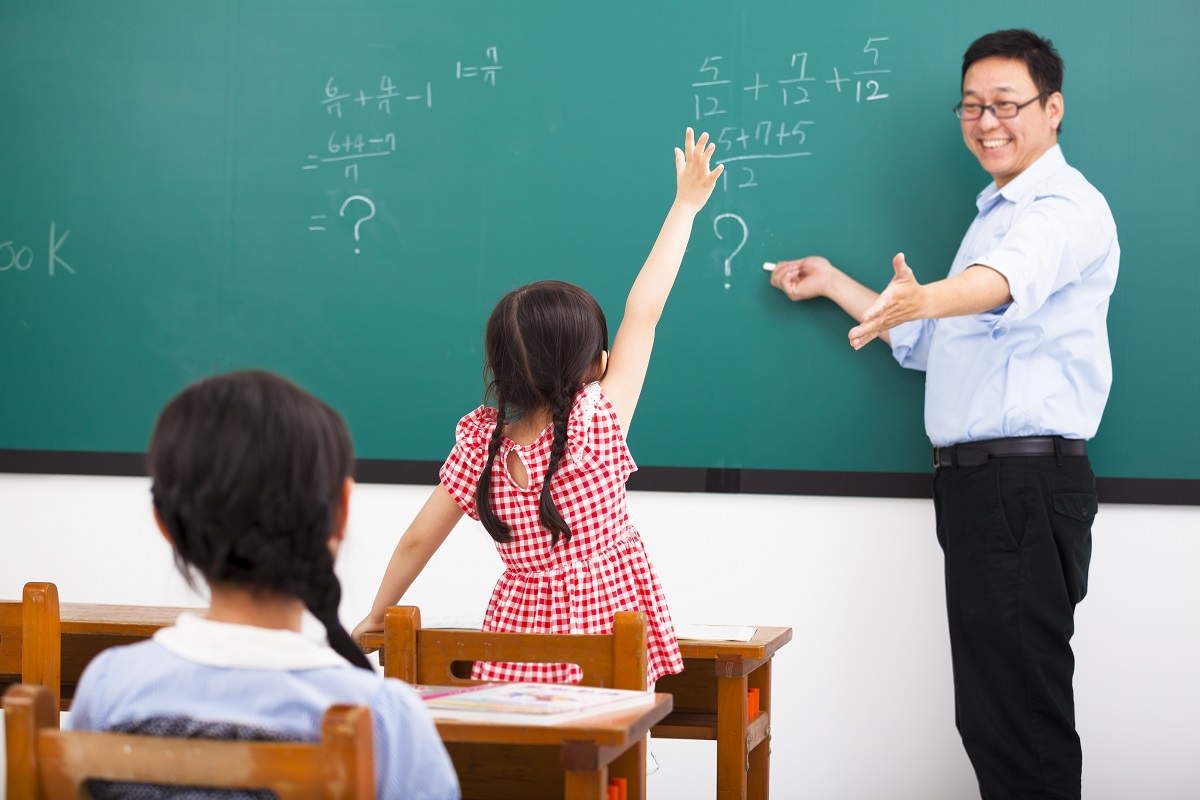Find the Best Primary Science Tuition Singapore for Enhanced Learning
Find the Best Primary Science Tuition Singapore for Enhanced Learning
Blog Article
A Comprehensive Overview to the Various Understanding Techniques in Main Scientific Research Direction
The expedition of diverse knowing methods in key scientific research instruction offers a chance for teachers to improve student involvement and understanding dramatically. By examining hands-on knowing methods, inquiry-based strategies, and collective approaches, we can identify effective practices that provide to numerous learning designs. In addition, the assimilation of innovation and set apart direction plays an important duty in promoting an inclusive setting. Nevertheless, the inquiry remains: exactly how can these methods be effectively applied in the classroom to optimize their impact? The solution hinges on a more detailed assessment of each approach and its ramifications for teaching scientific research.

Hands-On Understanding Strategies
Hands-on knowing strategies play a crucial role in key science guideline, engaging students in active expedition and trial and error. These methods permit learners to communicate directly with phenomena and products, promoting a deeper understanding of clinical ideas. By using manipulatives, designs, and real-life experiments, teachers develop an environment where students can observe, assume, and evaluate their concepts.
Such techniques not only improve understanding yet also cultivate vital thinking and analytical abilities. When students join tasks like constructing straightforward equipments, growing seeds, or conducting chemical responses, they are motivated to ask concerns and look for answers through their own monitorings. This experiential strategy aids to demystify intricate scientific principles, making them a lot more relatable and available.
Furthermore, hands-on discovering promotes collaboration amongst peers, as trainees often work in groups to carry out experiments or share findings. This teamwork not just improves their learning experience yet additionally establishes vital social skills. Inevitably, incorporating hands-on methods in key science guideline fosters a lifelong love of discovering and interest concerning the environment, laying a solid foundation for future scholastic searches in science and past.
Inquiry-Based Understanding
Inquiry-based learning is an instructional technique that motivates students to ask concerns, investigate sensations, and create their own understanding of clinical principles. This technique shifts the emphasis from traditional teacher-led direction to a much more student-centered experience, where learners take the campaign in their instructional trip. By promoting interest, inquiry-based discovering advertises deeper involvement with the material, enabling pupils to explore topics in a purposeful context.
In technique, this approach commonly entails hands-on experiments, monitorings, and crucial reasoning tasks that straighten very closely with the clinical method. Students are encouraged to formulate hypotheses, design investigations, and assess information, which grows crucial abilities such as problem-solving and logical thinking. The duty of the educator in this structure is to promote expedition, leading pupils with the query process while encouraging independent thought and partnership.
Furthermore, inquiry-based knowing nurtures a feeling of possession over the discovering process, motivating pupils to seek expertise proactively. This method not only boosts understanding of scientific concepts yet also fosters a long-lasting love for discovering, gearing up students with the abilities required to navigate a significantly complicated world.
Collaborative Knowing Approaches
Collaborative discovering approaches empower trainees to participate in meaningful interactions with peers, cultivating a common duty for their educational results. In key scientific research instruction, these techniques motivate students to interact to check out clinical principles, address problems, and conduct experiments (primary science tuition Singapore). By taking part in team tasks, pupils can utilize diverse perspectives, enabling richer understanding and retention of scientific understanding
One secret facet of joint understanding is the focus on interaction abilities. Students should verbalize their thoughts, listen actively to others, and discuss ideas, all of which are vital proficiencies in both real-world and scholastic contexts. This social communication not just improves their understanding of clinical principles but also promotes teamwork and conflict resolution abilities.
Moreover, collaborative learning frequently leads to increased inspiration and interaction. They are extra most likely to his response take ownership of their understanding trip when trainees see the worth of their payments within a team. Teachers can promote this procedure by developing structured team tasks that straighten with curriculum goals while giving advice on effective collaboration methods. In general, including collective learning strategies in main scientific research direction cultivates a dynamic discovering environment that prepares pupils for future academic and social obstacles.
Technology Assimilation in Scientific Research
The combination of innovation in primary science instruction boosts discovering experiences by offering ingenious tools and sources that sustain different mentor methods, consisting of collaborative knowing - primary science tuition Singapore. The usage of digital platforms, simulations, and interactive applications enables pupils to involve deeply with clinical ideas, promoting a more hands-on method to discovering
Online labs, for example, make it possible for students to perform experiments securely and successfully, advertising inquiry-based understanding. These devices can imitate real-world clinical scenarios, allowing students to envision intricate procedures that would certainly be tough to duplicate in a standard classroom setting. Moreover, modern technology cultivates communication and partnership among pupils, as they can share searchings for and work together on tasks via on-line systems.
Additionally, multimedia discussions and academic videos can improve lessons by accommodating diverse understanding styles, making abstract principles a lot more easily accessible. Data evaluation tools their explanation also equip students to accumulate and translate scientific information, reinforcing critical assuming skills. Overall, the calculated incorporation of modern technology in primary scientific research instruction not just enhances interaction but additionally prepares students for a highly advanced culture, outfitting them with vital abilities for future scientific undertakings.
Differentiated Direction Strategies
Set apart instruction techniques are crucial for dealing with the varied demands of learners in primary scientific research education and learning. These strategies allow educators to tailor their mentor techniques to suit differing abilities, rate of interests, and discovering designs within the class. By using distinguished direction, educators can develop a comprehensive environment that fosters interaction and improves understanding of scientific ideas.
One efficient approach is to use flexible grouping, which allows students to collaborate with peers at similar ability degrees or with varying viewpoints. This technique motivates peer understanding and advertises critical reasoning. Additionally, supplying selections in jobs can encourage pupils, permitting them to pick tasks that reverberate with their rate of interests while still satisfying curricular goals.
Furthermore, incorporating tiered projects is another valuable strategy. Deliberately jobs with differing levels of intricacy, teachers can guarantee that all students are suitably challenged, despite their effectiveness. Using formative assessments to evaluate comprehending more allows teachers to readjust their educational approaches dynamically, making certain that each student gets the support they require.
Ultimately, implementing separated instruction approaches in main scientific research education not just boosts student understanding outcomes yet also grows a passion for science, preparing pupils for future academic quests.

Verdict
In summary, efficient primary science guideline demands a complex method that includes hands-on understanding, inquiry-based methods, and joint methods. The combination of modern technology and set apart direction Read Full Report even more satisfies diverse learning styles, cultivating an environment favorable to expedition and crucial reasoning. By implementing these methods, instructors can enhance pupil engagement and understanding, inevitably nurturing a lifelong enthusiasm for scientific research and questions. Such extensive methods are essential for developing notified and interested future researchers.
The exploration of diverse understanding methods in key scientific research guideline offers a chance for teachers to improve student engagement and comprehension significantly.Hands-on learning strategies play an essential function in main science guideline, involving trainees in active expedition and trial and error.Inquiry-based discovering is a training approach that urges trainees to ask questions, examine phenomena, and create their own understanding of clinical principles.Collective learning strategies equip students to involve in meaningful communications with peers, fostering a shared duty for their instructional outcomes. On the whole, integrating collaborative understanding methods in key science guideline cultivates a vibrant knowing atmosphere that prepares pupils for future academic and social obstacles.
Report this page